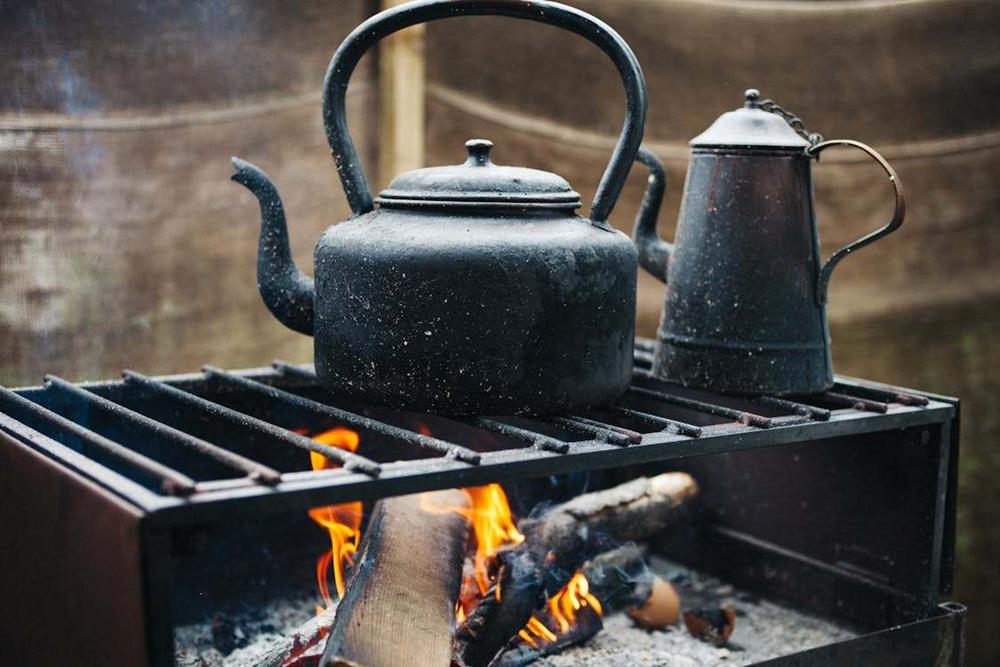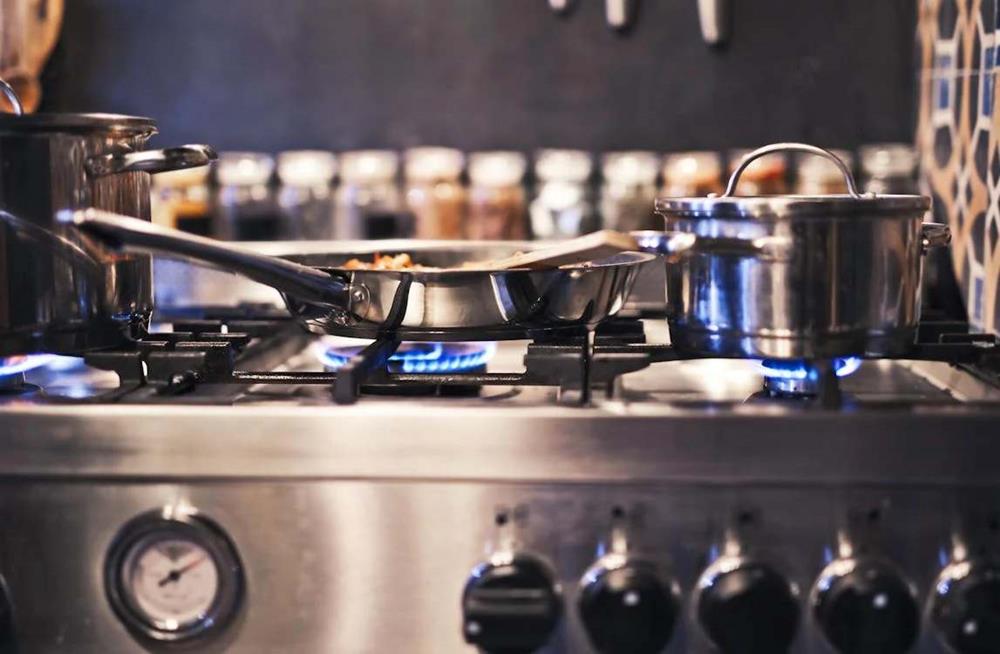The act of cooking, a fundamental aspect of human civilization, has evolved significantly from its humble beginnings around open fires to the sophisticated culinary techniques of today. This journey through the history of cooking reveals not just changes in how we prepare food but also insights into the development of cultures, societies, and technologies over millennia.
From the discovery of fire to the advent of agriculture, and from the first simple recipes to the complex dishes that grace our tables now, cooking has been a constant companion in the human story. This article aims to trace the milestones that have shaped the culinary world, highlighting how our ancestors’ innovations and discoveries have influenced modern cooking practices.
Prehistoric Cooking
The roots of cooking trace back to prehistoric times, marking a pivotal moment in the evolution of human society. The discovery of fire, estimated around 1.5 million years ago, laid the foundation for the development of cooking. Early humans, such as Homo erectus, were the first to harness fire’s transformative power, leading to the advent of cooked food. This breakthrough not only made food safer and more palatable but also had profound implications for human nutrition and social organization.
Archaeological evidence suggests that the controlled use of fire for cooking began in earnest around 790,000 years ago, with findings from sites like Gesher Benot Ya’aqov in Israel showcasing the remnants of hearths and charred animal bones. The introduction of cooking enabled early humans to consume a wider variety of foods, including meat and tubers, which were difficult or impossible to eat raw. This dietary expansion provided the calories and nutrients necessary for brain growth, fueling the development of Homo sapiens.
The invention of pottery around 20,000 years ago further revolutionized prehistoric cooking. Earthenware pots allowed for the boiling of food, opening up new culinary possibilities and making it easier to digest and extract nutrients from plant-based foods. This era also saw the beginnings of agriculture, around 10,000 BCE, which dramatically changed human diets and cooking practices. The domestication of plants and animals led to the development of settled communities, where food could be stored and prepared in more complex ways.
Ancient Cooking
The history of ancient cooking is as diverse as the civilizations that shaped it, each contributing unique flavors, techniques, and traditions to the culinary world. The ancient Egyptians, around 2000 BCE, were among the first to use yeast, unlocking the secrets of leavened bread and beer, staples that would nourish their society, and laborers who built the pyramids. Meanwhile, in ancient China, the Zhou Dynasty (1046-256 BCE) refined the art of fermentation, producing soy sauce and other fermented condiments that remain central to Chinese cuisine.
In the Mediterranean, the ancient Greeks, around 500 BCE, developed a diet focused on simplicity and balance, emphasizing vegetables, fruits, and fish seasoned with olive oil and wine. This tradition laid the groundwork for what is now known as the Mediterranean diet. The Romans, building on Greek culinary foundations, introduced the world to a more elaborate dining culture around the 1st century BCE. Their banquets showcased a wide array of foods, from exotic meats to rich sauces, highlighting the empire’s wealth and culinary diversity.
Across the Atlantic, the ancient Mayans (2000 BCE to 900 AD) were cultivating crops like maize, beans, and chili peppers, ingredients that remain central to Mexican cuisine. They developed techniques like nixtamalization, treating corn with lime to make it more nutritious and versatile for making masa, the dough used in tamales and tortillas.
Medieval Cooking
Medieval cooking, spanning roughly from the 5th to the 15th century, reflects a period of culinary evolution deeply influenced by social hierarchies, agricultural practices, and the expansion of trade networks. The early medieval period saw the continuation of Roman culinary traditions in Europe, but as the centuries progressed, distinct regional cuisines began to emerge, shaped by local ingredients and the feudal system.
In the noble courts, feasting was a display of wealth and power, with elaborate dishes prepared by skilled cooks. Meats such as venison, boar, and poultry were central to these feasts, often accompanied by rich sauces spiced with precious ingredients like saffron and cloves, which were imported through expanding trade routes with Asia and the Middle East. The introduction of sugar in the 11th century, following the Crusades, brought about a transformation in European desserts, leading to the creation of sweet pastries and confections previously unknown.
For the majority of the population, however, the diet was simpler, based on grains such as wheat, rye, and barley. Bread was a staple, along with pottage—a thick stew of vegetables and sometimes meat. The medieval period also saw the widespread establishment of monasteries, which played a crucial role in the development of agricultural techniques and the preservation of culinary knowledge. Monks cultivated vineyards and herb gardens, brewing beer and wine and experimenting with herbs and spices to create medicinal and culinary concoctions.
The medieval kitchen was a place of innovation out of necessity, leading to the invention of tools and techniques that would lay the groundwork for modern cooking. The spit roast, for example, allowed for more efficient cooking of large cuts of meat, while the development of pottery and metalwork expanded the possibilities for boiling, stewing, and baking.
Renaissance Cooking
The Renaissance, a period of profound cultural and intellectual rebirth spanning the 14th to the 17th century, brought significant changes to the culinary world. This era, predominantly centered in Italy before spreading across Europe, saw the emergence of cooking as an art form, deeply influenced by the exploration of new worlds and the rediscovery of ancient texts.
One pivotal figure in Renaissance cooking was Maestro Martino of Como, whose work in the mid-15th century laid the groundwork for modern Western cuisine. His cookbook, “Libro de Arte Coquinaria” (The Art of Cooking), compiled around 1465, introduced recipes that emphasized seasonality, the art of sauce making, and the presentation of dishes—concepts that were revolutionary at the time.
The discovery of the New World in 1492 by Christopher Columbus introduced Europe to a plethora of new ingredients, including tomatoes, potatoes, maize, and chocolate, which would eventually become staples in European diets. However, it’s worth noting that the integration of these ingredients into European cuisine was not immediate and took several centuries to become widespread.
The influence of the Renaissance on cooking and dining extended beyond recipes to include dining etiquette and the aesthetics of the dining experience. Banquets became elaborate displays of wealth and power, featuring intricate dishes that were as much a feast for the eyes as they were for the palate. Cooks began to experiment with ingredients and presentation, leading to the development of new cooking techniques and the refinement of kitchen tools.
One notable work that reflects the culinary sophistication of the time is “Opera” by Bartolomeo Scappi, published in 1570. Scappi, who served as a chef to several cardinals and popes, compiled an extensive collection of recipes, cooking techniques, and kitchen equipment designs, offering insight into the sophisticated banquets of the Renaissance elite.
Victorian Era Cooking
The Victorian era, spanning from 1837 to 1901 under the reign of Queen Victoria, was a time of significant change in British society, which was reflected in its cooking and dining habits. This period saw the rise of the middle class and the establishment of new social norms and traditions, many of which revolved around the dining table.
One of the most notable aspects of Victorian cooking was the introduction of formal meal structures, with breakfast, lunch, afternoon tea, and dinner becoming established parts of the day. Dinner parties became elaborate affairs, often consisting of multiple courses designed to showcase the host’s wealth and sophistication. This era popularized the concept of “service à la russe” (serving meals in courses) over “service à la française” (where all dishes are presented simultaneously).
The Victorian era also witnessed advancements in kitchen technology and food preservation. The invention of the icebox in the 19th century and the development of canning techniques greatly impacted food storage and preparation. This period also saw the publication of influential cookbooks, such as Mrs. Beeton’s “Book of Household Management” in 1861. Isabella Beeton’s comprehensive guide covered not just recipes but also advice on household management, solidifying her status as a household name.
The expansion of the British Empire during this time introduced a variety of new ingredients and cuisines to the British palate. Spices from India and other colonies started to make their way into traditional British dishes, giving rise to fusion cuisines that are still popular today.
Despite the era’s reputation for opulence, Victorian cooking was also marked by stark contrasts between the rich and the poor. While the upper classes enjoyed an abundance of food and variety, the working classes often subsisted on a more monotonous diet centered around bread, porridge, and potatoes. However, this period also saw the emergence of philanthropic movements aimed at improving food access and nutrition for the less fortunate.
20th Century Cooking
The 20th century was a transformative period for cooking and culinary practices, shaped by technological advancements, societal changes, and the globalization of food culture. This era witnessed the birth of fast food, the rise of celebrity chefs, and a growing awareness of health and nutrition.
The early part of the century saw the introduction of home appliances that revolutionized cooking, such as the gas oven and the refrigerator. These inventions made food storage and preparation easier, leading to changes in how meals were cooked and consumed. The 1950s and 1960s further embraced convenience with the popularity of TV dinners and processed foods, reflecting the era’s fascination with speed and efficiency.
This period also marked the rise of fast food, with the opening of the first McDonald’s by Richard and Maurice McDonald in 1940, which Ray Kroc later turned into a global franchise. Fast food changed the way people ate, emphasizing speed, convenience, and consistency.
The latter half of the 20th century also saw a shift towards health-conscious eating, spurred by research linking diet to health outcomes. The publication of “Diet for a Small Planet” by Frances Moore Lappé in 1971 and the government’s dietary guidelines introduced in the 1980s encouraged people to consider the nutritional value of their food choices.
Celebrity chefs and television cooking shows began to rise in popularity, influencing home cooking trends and making gourmet cuisine more accessible. Julia Child, for example, introduced French cooking to American audiences with her book “Mastering the Art of French Cooking” in 1961 and her television show “The French Chef.”
The globalization of food, facilitated by advances in transportation and communication, brought a wide array of cuisines into homes and restaurants around the world. This led to an increased appreciation for diverse culinary traditions and ingredients, fostering a more interconnected global food culture.
As the century closed, there was a growing movement towards sustainable and organic eating, driven by concerns over food production practices and their environmental impact. The slow food movement, founded by Carlo Petrini in Italy in 1986, advocated for preserving traditional and regional cuisine and emphasized the importance of farming practices that are good for the environment.
Modern Cooking
The turn of the millennium ushered in an era dominated by the internet and social media, drastically changing how people interact with food. Platforms like YouTube and Instagram have allowed chefs, both professional and amateur, to share recipes, cooking tips, and food photography with a global audience. This democratization of culinary knowledge has led to a more informed and adventurous dining public.
Sustainability has become a significant concern in modern cooking, with chefs and home cooks alike focusing on locally sourced, organic ingredients. The farm-to-table movement, popularized in the early 2000s, emphasizes direct relationships between restaurants, farmers, and consumers to ensure fresh, environmentally friendly meals. Notable proponents include chef Alice Waters, whose restaurant, Chez Panisse, opened in 1971, has been a pioneer in sustainable gastronomy.
The 21st century also saw the rise of plant-based diets and alternative proteins, reflecting growing concerns about health, animal welfare, and the environment. Innovations in food technology have produced meat substitutes that closely mimic the taste and texture of real meat, appealing to vegetarians, vegans, and meat-eaters alike.
Conclusion
In tracing the evolution of cooking through the ages, from the open fires of prehistoric times to the sophisticated culinary techniques of the modern era, we’ve journeyed through a fascinating narrative of human innovation, cultural exchange, and social transformation. The history of cooking reflects not just changes in food preparation methods but also broader shifts in society, technology, and the way we relate to food and to each other.





